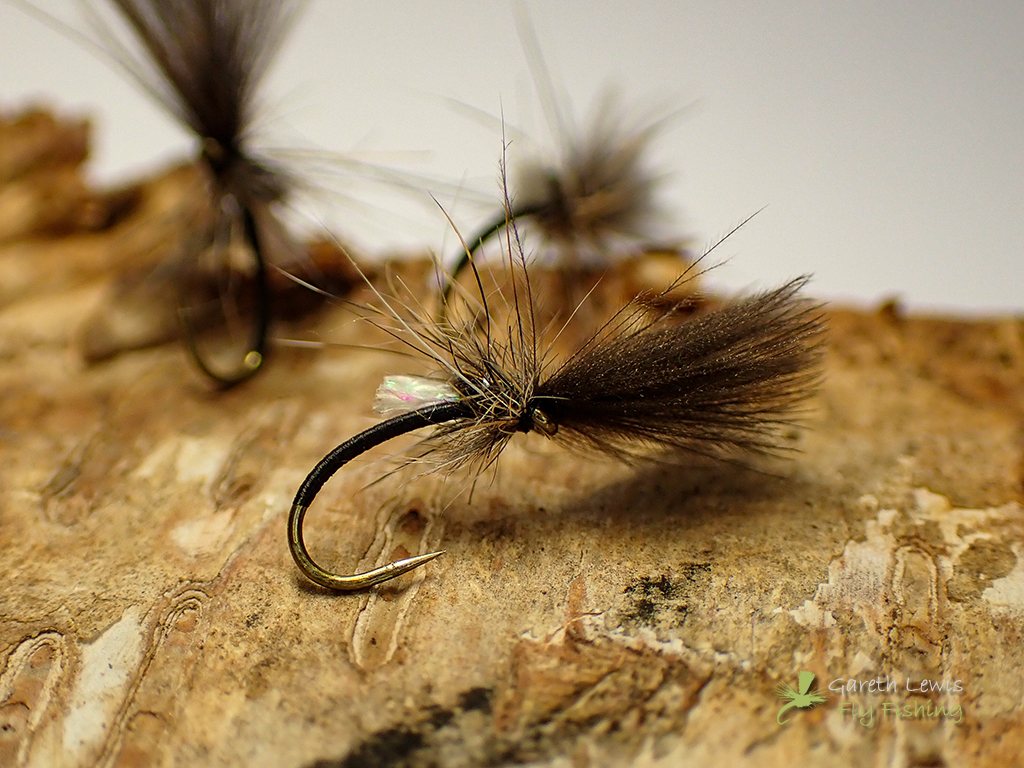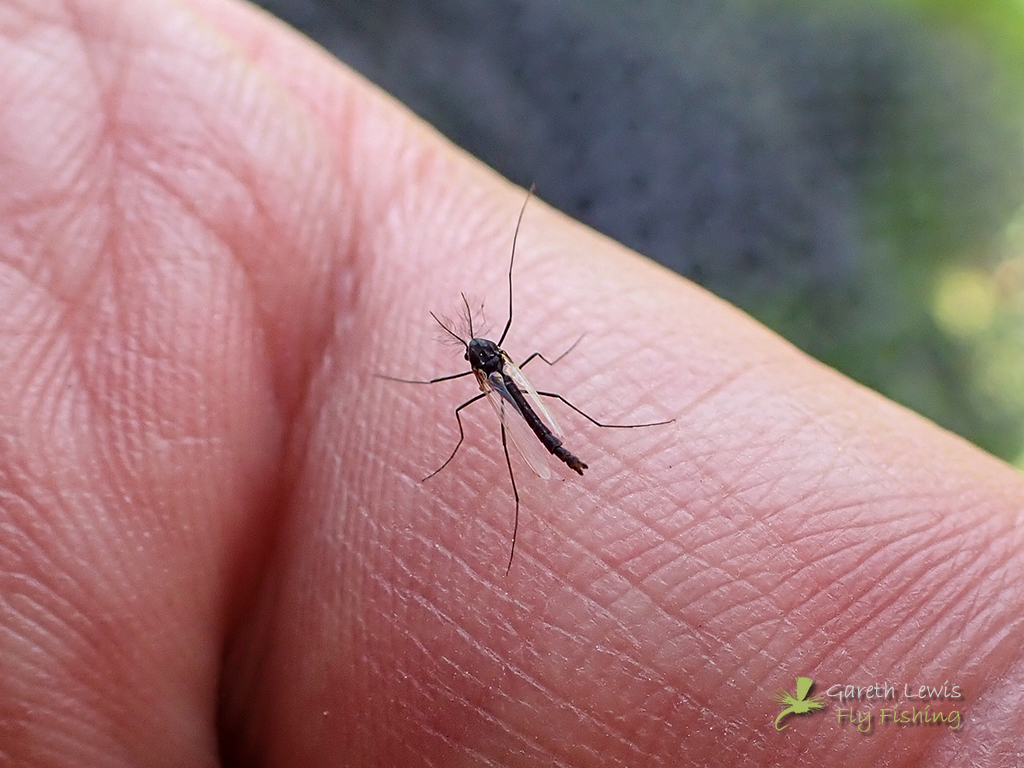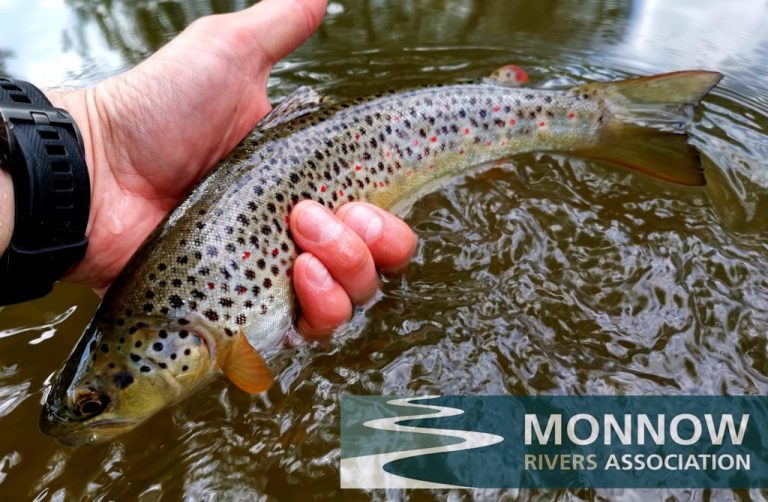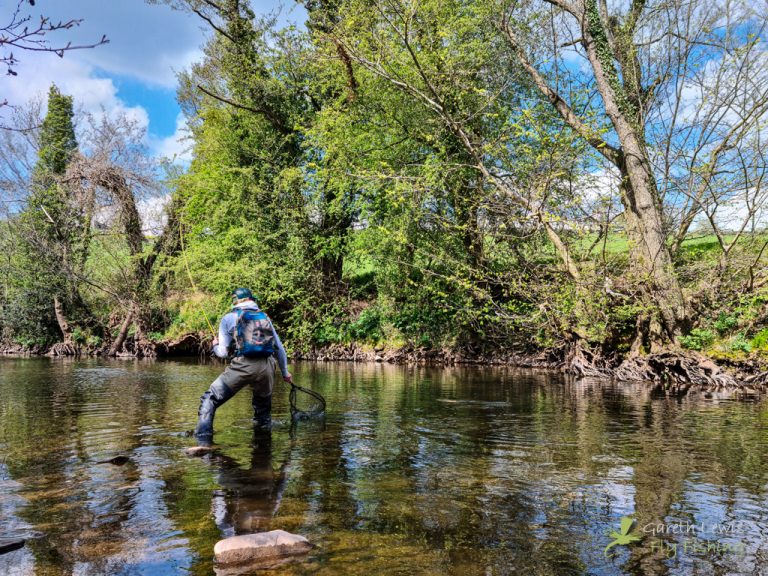“I can’t see what they’re taking. What should I use?” “I’ve tried every fly in my box, but I just can’t get the trout to look at my fly!”
Dimple rises. Those tiny, sometimes almost imperceptible indentations of evidence of feeding trout. Even on the coldest days on our Welsh rivers and throughout the UK, where the prettier upwinged Empemeroptera of spring, summer, and autumn seemingly prefer to stay under the rocks, midge (Chironomids/Chironomidae) will hatch. These hardy invertebrates are everywhere and in their millions in any trout-fearing waterway, and they will hatch all year.
Whether I’m targeting trout feeding on midge is, sometimes, irrelevant, as I find some patterns ‘just do it all’. The Chironomid Cul de Canard is one just pattern, and thanks to a friend, Geraint Meadows, it is a pattern I’ve used for almost twenty years. I’ve tweaked the pattern slightly, adding a little ‘flash’ in the form of wing/air bubble imitation, but I doubt the trout really mind. This is simply a CdC shuttlecock pattern with a spikey grey squirrel thorax that will help imitate any emerging invertebrate, not just Chironomids. Let’s be honest; any emerging invertebrate is a mess of legs, wings, and other ‘bits’ I’m not versed enough in to describe. This pattern is buoyant, even holding its own in slightly broken water, and depending on its size and amount of plumage, can be seen easily enough at a distance (dependent on the water ‘noise’).
Note – You’ll see in the images below that the invertebrate is an adult with fully formed wings. The CdC Emerger we are initiating is in the emerger stage. Getting a detailed image of an adult was hard enough, so you’ll have to wait a little longer for a close-up of the emerging pupa.
This is a pattern that I use year-round for trout or grayling. The hook doesn’t necessarily have to be curved, but in my opinion, a curved hook will result in better penetration into the surface film. The hook must be suited to dry fly fishing, so the wire gauge shouldn’t be too thick, and certainly not a curved hook designed for nymphs.
Larger sizes (size 16-18) will happily imitate any ephemera/upwings, with smaller sizes (size 18-24) meant for midge feeders or those extra spooky summer fish.
Materials
- Hook: Tiemco TMC2487BL, size 16-24
- Thread: Semperfli Classic Waxed Thread, 12/0, black
- Body: Thread, as above
- Wing Buds: Semperfli Flat Braid, pearl
- Wing: CdC, three (3) feathers, natural
- Thorax: Squirrel, grey
Method
- Start by entering your thread behind the eye, leaving room to tie off when finishing.
- In touching turns, wind the thread down to the curve of the hook and back to the rear of the thorax.
- Tie in the wing material, winding forward. Take care not to crowd the eye, and when ready, remove the tag end.
- From behind the eye, tie in the CdC and wind backwards to the rear of the thorax.
- Split your thread and add a mere pinch of squirrel dubbing, spin, and wind forward, ensuring not to trap down any of those crucial guard fibres.
- Finally, whip finish under the CdC and behind the eye, and remove any excess squirrel.





